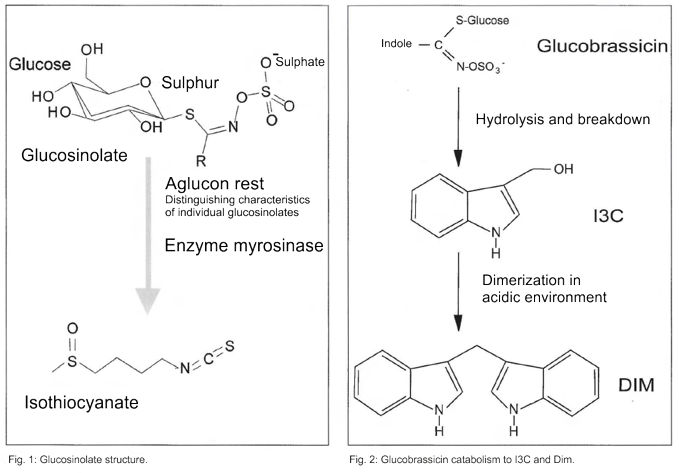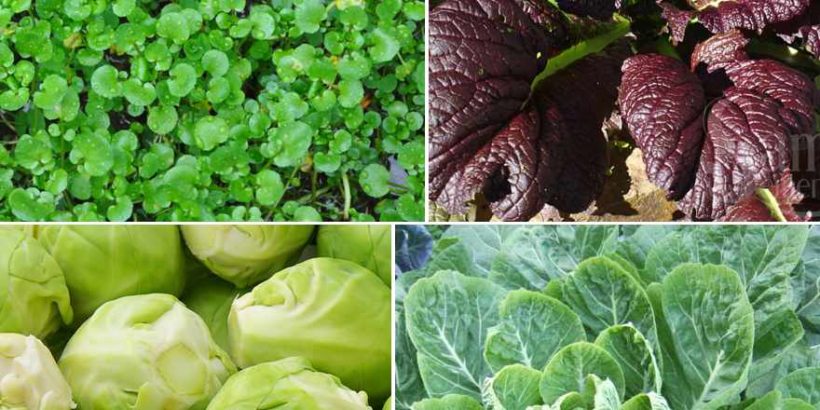German Journal for Oncolgy 2015; 47: 20-27
Ben L. Pfeifer1, Theodor Fahrendorf2
1 Aeskulap-lnternational AG, Luzern, Schweiz 2 Anaxbiocon UG, Gatersleben, Deutschland
Summary
Breast cancer is the most common malignancy in women today. Despite improved therapies, only every second woman with breast cancer can expect cure. If cancer is metastatic at diagnosis, or recurs with metastases, then treatment is limited to palliative measures only, and cure is usually not expected. Under these circumstances, quality of life as well as overall survival of the patient is significantly reduced.
It is therefore advisable for patients, their physicians, and the entire society at large, to search for more effective and less toxic treatment methods and develop better prevention strategies that can reduce the burden of this cancer on the individual patient and society as a whole. Indole-3-carbinol, a glucosinolate derivative from cruciferous vegetables, seems to be a strong candidate to achieve these goals. It is abundantly available, well tolerated and non-toxic. Sufficient amounts for prevention of breast cancer can be taken up by daily consumption of cruciferous vegetables.
Higher, therapeutic concentrations can be achieved with certain food supplements or functional foods. Indole-3-carbinol is known to have cancer preventive properties, reduces development and propagation of metastases, and enhances the therapeutic effects of various standard chemotherapy as well as other drugs used in conventional treatment regimens.
Key words: Breast cancer, prevention, complementary therapy, glucosinolate derivatives, indole-3-carbinole
Introduction
Apart from cardiovascular diseases, cancer is the second leading cause of death in the Western world. Based on data from Europe and the United States, breast cancer is the most common malignant tumour in women. Today the majority of affected patients can be cured by adherence to modern therapy guidelines provided the disease is detected in its early stages. However, our standard therapies have proven unsuccessful in almost half of the patients and the tumours have relapsed. The resultant metastasization of the tumours limits the treatment strategy to palliative measures.
This notwithstanding, there have been significant improvements in recent years in the standard treatment of cytotoxic and anti-hormonal therapies, bisphosphonate treatment of bone infection as well as antibody therapies for human epidermal growth factor receptor 2 (HER2) positive tumours. Over the years, these improvements can lead to disease and symptom control depending on the individual case of the patient. However, the median overall survival of patients with remote metastatic breast cancer is still significantly low.
Against this background, it is easy to understand only too well why the health systems need to put more emphasis on effective prevention, and why doctors and patients are looking for effective additional therapies, with less toxic side effects that could lead to improved tumour control, survival, longevity as well as good quality of life.
Some of the best candidates in this respect seem to be secondary plant substances from cruciferous vegetables, such as indole 3-carbinol (I3C). This is a glucosinolate derivative containing sulphur whose metabolic products are widely known for their anti-cancer effects [34-36, 44, 46]. Detailed studies have been carried out regarding their preventive and therapeutic effectiveness in treating breast cancer and other types of cancer [7, 12, 18, 30, 62, 79]. Laboratory tests on cell cultures and animal experiments showed that I3C prevents the development of cancer in various organs in rodents, slows down the growth of existing tumours and reduces metastases [13, 14, 45, 66, 74, 82]. Besides, several partially synergistic mechanisms of action have been suggested based on experiments of I3C and its derivatives in cancer prevention and therapy. These include: inactivation of carcinogenic substances, protection against DNA damage, antiviral and antibacterial effects, anti-inflammatory effects, apoptosis induction, angiogenesis and cell migration Inhibition.

However, there is less clarity of epidemiological studies regarding the reduction of the risk of breast cancer in humans by I3C. For example, a meta-analysis of 8 prospective studies from the United States, Canada, the Netherlands and Sweden, could not establish any significant correlation [73]. Nonetheless, a recent meta-analysis of 13 epidemiological studies found a significant reduction in the risk of breast cancer with increased ingestion of cruciferous vegetables [53]. Different case and cohort studies also showed that women with higher consumption of cruciferous vegetables have a significantly lower risk of suffering from breast cancer [7, 34, 84]. Moreover, the study entitled “Women’s Healthy Eating and Living (WHEL)”, in which more than 3,000 breast cancer patients participated, offered proof of additional reduction in the risk of recurrence when tamoxifen therapy was supplemented by the concomitant intake of cruciferous vegetables [78].
It may appear premature, based on this data, to give credence to I3C in complementary therapy of breast cancer and prevention. This notwithstanding, it is apparent that an increasing number of anxious and concerned patients and their doctors trust this substance in achieving their goal of effective prevention, improved tumour control, longer survival and a good quality of life.
It is therefore the objective of this article to point out and discuss the new scientific findings regarding I3C.

